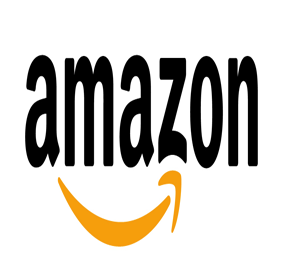The shocking collapse of the Amazon deal has been the big story for the past two weeks. And its reverberations will continue to resound into the foreseeable future.
Twenty-five thousand high-paying jobs at the planned Amazon HQ2 in Long Island City, plus a projected $27 billion in revenue for the city over time, have been lost, as a result.
On the other hand, Amazon won’t enjoy the $3 billion in tax incentives it was promised by Governor Andrew Cuomo and Mayor Bill de Blasio. (Again, as new Congressmember Alexandria Ocasio-Cortez did not seem to grasp, that money does not actually currently exist to be given to other worthy causes.)
Polls say most New Yorkers favored the deal, believing it would boost the economy in the surrounding area and for the city, in general. But critics, for their part, argued that Amazon’s presence would just spark gentrification, ultimately pushing out lower-income residents and struggling mom-and-pop businesses.
One big factor that turned local politicians against the Bezos behemoth was the fact that this deal was essentially hashed out behind closed doors. A number of current and past city councilmembers signed a letter two years ago in favor of Amazon coming to New York. But, as one of them, former Speaker Melissa Mark-Viverito, said during a recent public-advocate debate, they only did so believing the project would go through the city’s Uniform Land Use Review Procedure, or ULURP. However, the plan was not going to do that under Cuomo and de Blasio’s arrangement.
But deals reached out of the public eye and without community input will invariably breed distrust and opposition. Look no further than the situation with the Elizabeth St. Garden. It was under former Mayor Mike Bloomberg that the city and Councilmember Margaret Chin earmarked the Little Italy green oasis for affordable housing. Community Board 2, as this page has pointed out numerous times before, was not consulted — or even notified of the plan — before the decision was unilaterally made to build housing there.
At this point, the fate of the Elizabeth St. Garden will likely be determined in court.
Also, it bears mentioning that, unlike Amazon, Google has not received any tax breaks for the extensive office space it has already created in Chelsea over the past decade or so and which it plans to create on Pier 57 and in Hudson Square. When all is said and done, Google is set to have somewhere more than 20,000 jobs total in Downtown Manhattan.
Clearly, Amazon did not really need — or, more to the point, deserve — billions of dollars in tax breaks to be lured here. But because they’re Amazon, they could try to pull that one off. Ultimately, it backfired on them.
But there is an even-larger debate for our area, in our view, one that we saw rage last year in the push — ultimately unsuccessful — for zoning protections around the planned “Tech Hub” on E. 14th St. Namely, is tech a positive for our neighborhoods? Tech, for one, clearly thinks so: Even with the Amazon meltdown, New York City is still being ranked the number one city for tech.
However, local residents and preservationists, like Andrew Berman, director of the Greenwich Village Society for Preservation, have been raising the red flag about “tech spread” and its local impacts. Berman notes that much of the commercial development in the Downtown area seems to be driven by the tech industry, and it is causing “a sudden and rapid” change in our communities. Suddenly, the West and East Villages are de facto “hot neighborhoods” for office development.
This could be appropriate in Hudson Square — where the old St. John’s Terminal is being renovated and vertically enlarged for Google. But it’s inappropriate, for example, at St. Mark’s and Third Ave., where an office tower is planned for the former Continental bar/McDonald’s site. Broadway south of Union Square is another strip that is being aggressively targeted for development — some of it overtly slated for tech firms.
In some of these cases, the existing zoning dates back 60 years to when these properties were used as warehouses, printing presses, book binderies and so forth. That zoning is now outdated. What is needed is a downzoning or at least height caps on new development.
In short, tech companies want to locate in nontraditional places for offices — diverse, 24/7, offbeat, mixed-use neighborhoods, just like the Village area. Some quibble whether Amazon is technically a tech company per se. But obviously it’s an Internet-based colossus, so it’s firmly in the same vein.
Finance, Insurance and Real Estate, a.k.a. “FIRE,” have formed the bedrock of the city’s economy for sometime now. A former cornerstone, manufacturing, is largely gone. But it looks like tech is now well on the way to becoming one of the city’s new power players.
In the end, however, the key is not to kill the goose that lays the golden eggs. If Downtown — which the tech firms covet — is overrun by them, it’s going to lose what makes it so unique and cherished. Zoning protections can at least help preserve what’s left of that special character.


















